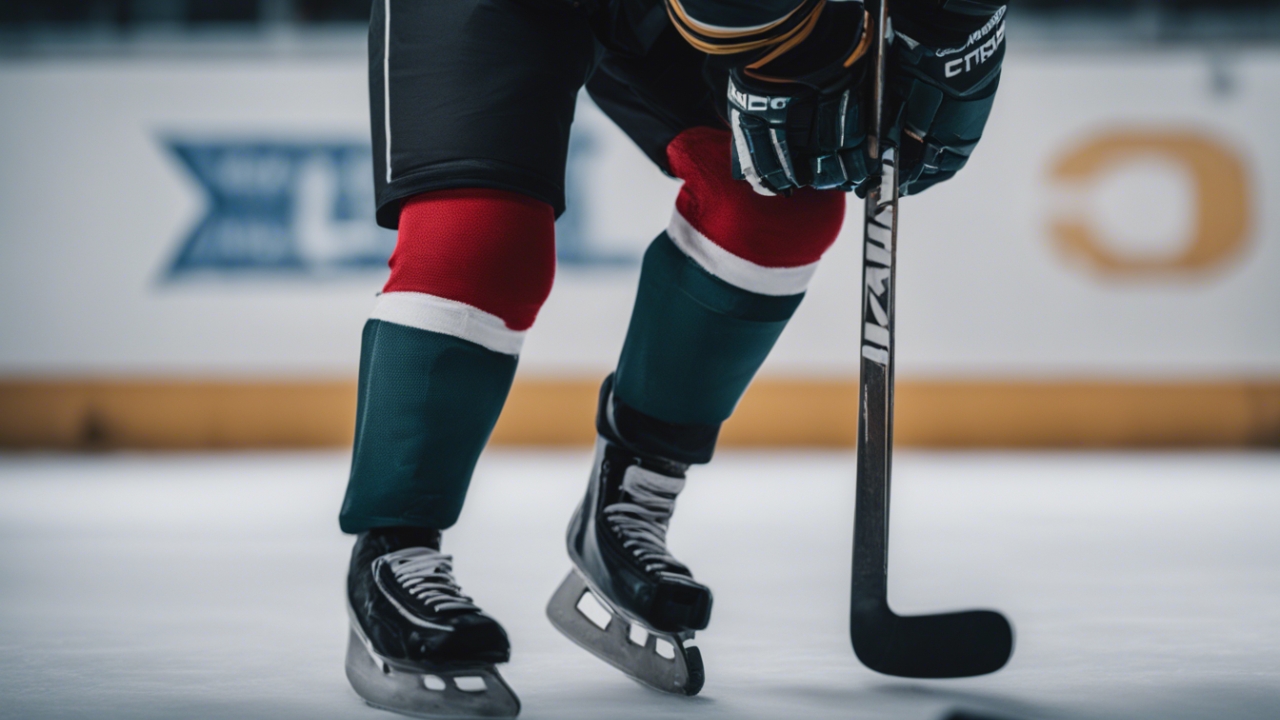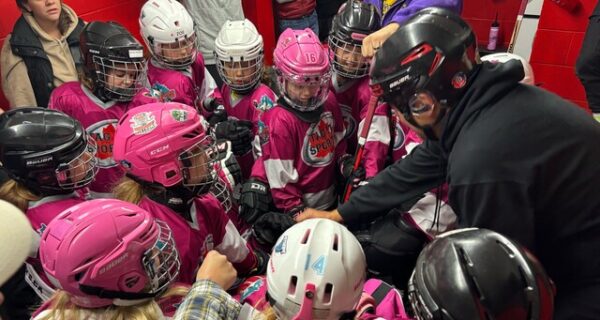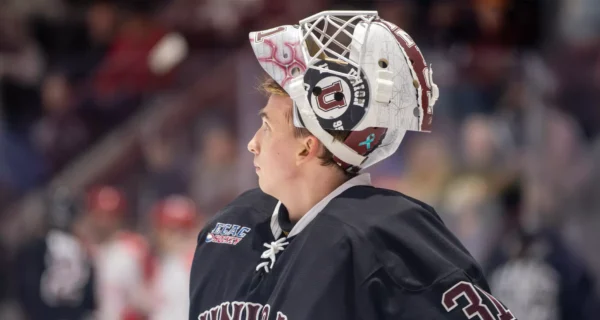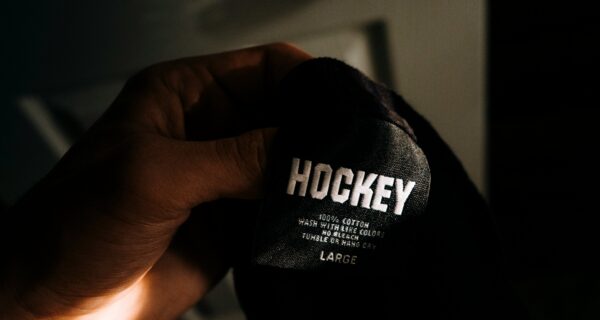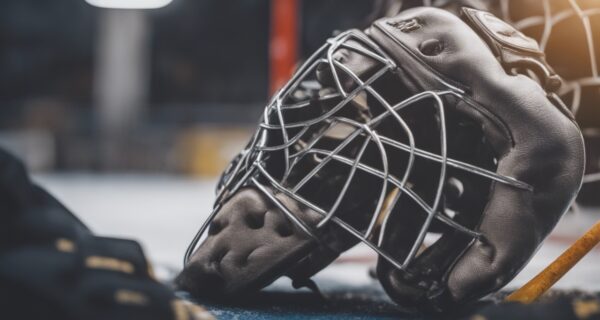To choose the correct size hockey socks, measure the distance from the top of your shin pads to the middle of your thigh. Hockey sock sizes typically range from youth to adult sizes, with specific inch measurements for length.
Selecting the right hockey socks is crucial for comfort and performance on the ice. They protect your legs while fitting snugly over shin guards, ensuring you stay secure throughout the game.
It’s important to get a size that’s not too tight to maintain circulation or too loose to avoid fabric interference while skating.
With different materials and styles available, hockey players should choose breathable, durable socks that suit their needs.
Your skate size and leg length dictate the size required, ensuring a perfect match that complements your hockey gear ensemble.
Remember, well-fitted hockey socks contribute to your agility and confidence, making them a fundamental part of your hockey attire.
Choosing the Right Hockey Socks
Stepping on the ice demands more than just skills; it demands the right gear. Choosing the right hockey socks is crucial for comfort and performance.
These socks protect you and keep your shin guards in place. Let’s dive into what makes the perfect hockey sock fit.
Factors Influencing Sock Size
Your hockey sock size depends on various factors, including your leg length, calf size, and the type of shin guards you use. Finding the right fit is key for ease of movement and protection.
- Leg Length: Measure from the ankle to the bottom of the knee.
- Calf Size: Consider the width around the largest part of your calf.
- Shin Guard Size: The sock must cover your shin guards completely.
Material and Flexibility Considerations
Materials range from traditional knits to modern blends. Hockey socks need to be flexible yet durable. They should also manage moisture and remain comfortable.
Material Type | Benefits |
Cotton | Comfortable, breathable |
Synthetic | Moisture-wicking, durable |
Blends | Combines benefits of cotton and synthetic |
Sizing Up for Peak Performance
Sizing up for peak performance is crucial in hockey. The right size hockey socks are essential not just for comfort but can also impact your ability to skate and maneuver on the ice.
A perfect fit ensures protection and avoids distractions caused by ill-fitting gear. Let’s find the correct size for you.
Adult vs. Youth Sizing
Finding the right hockey sock size starts with identifying whether you need adult or youth sizes.
Adult sizes typically range from 28 to 32 inches and are suitable for players over the age of 14.
On the other hand, youth sizes vary from 20 to 24 inches and fit younger players up to 14 years old.
Here’s a glance at the two categories:
| Category | Size Range (inches) | Age Group |
|---|---|---|
| Adult | 28 – 32 | 14 years and above |
| Youth | 20 – 24 | Up to 14 years |
Measuring Your Leg Length
For optimal performance, precise measurement of your leg length is essential. Measure from the ankle to the bottom of the knee to find your perfect sock length. Here’s how:
- Stand straight with your bare feet flat on the ground.
- Place a measuring tape at the center of your ankle.
- Extend the tape up to the bottom of your kneecap.
- Record this measurement to compare with size charts.
Always round up if your measurement falls between sizes to ensure enough coverage, and avoid having your socks too short during play.
Different Sock Types Explained
Choosing the right hockey socks is crucial for comfort and performance. Different types cater to various needs. Let’s dive into the types of hockey socks available.
Traditional Knit Socks
Traditional knit hockey socks are classic. They provide a familiar feel on the ice. Their features include:
- Material: Mostly made of cotton or a cotton blend.
- Breathability: Natural fibers allow for good airflow.
- Design: Classic team stripes are common.
- Durability: They can wear out faster than synthetic options.
To size traditional socks, match them to your shin guards. Use a size chart provided by the manufacturer for accuracy.
Performance Synthetic Socks
Performance synthetic socks are a modern choice. Their innovation lies in the materials used. Here are their benefits:
- Moisture-wicking: They keep your feet dry.
- Compression: Offers support and reduces fatigue.
- Antimicrobial: Helps prevent odors.
- Lightweight: Less bulk for better mobility.
Like with knit socks, size these with shin guard measurements. Look for a fit guide to find the perfect match.
Compatibility With Protective Gear
Compatibility with Protective Gear plays a crucial role in selecting hockey socks. The right size ensures protection and comfort on the ice.
They must also work seamlessly with shin guards. Hockey players need to focus on the fit and coverage that their socks provide.
Shin Guards and Sock Fit
Shin guards are a key component of a player’s equipment. They must sit snugly within the hockey socks.
The correct sock size ensures that shin guards remain securely in place. This prevents shifting during gameplay, maintaining optimal protection.
- Measure shin guards from the center of the kneecap to the top of the skate boot.
- Select socks that extend beyond the top and bottom of the guards.
- Ensure socks allow for flexibility and ease of movement.
Ensuring Full Coverage
Full coverage is imperative for maximum protection. Hockey socks should completely cover the shin guards and extend up to the lower thigh, ensuring no part of the shin guard is exposed.
Shin Guard Size (inch) | Hockey Sock Size (inch) |
12 – 14 | 24 |
14 – 16 | 28 |
16 – 18 | 30 |
18+ | 32+ |
The ideal sock length also depends on personal comfort and preference. Socks that are too tight may restrict movement, while socks that are too loose risk sliding down during play. Aim for a snug yet comfortable fit.
Maintaining Your Hockey Socks
Finding the perfect hockey socks is only the first step. Keeping them in top shape is crucial for peak performance on the ice.
Well-maintained socks can provide better comfort and fewer distractions during the game. Let’s explore the best practices for caring for hockey socks.
Washing and Care
Regular cleaning is key to maintaining your hockey socks. It keeps them free from odors and bacteria. Here are tips for proper washing:
- Turn socks inside out before washing.
- Use a gentle cycle with cold water to prevent shrinkage.
- Avoid bleach and fabric softeners, as they can break down fibers.
- Hang your socks to dry to preserve their elasticity.
For extra care, consider using a mesh laundry bag. It prevents socks from stretching and snagging in the washer.
When to Replace Your Socks
Even with great care, hockey socks have a life span. Look out for these signs to know when to replace them:
| Sign | Action |
|---|---|
| Thinning material | Time for new socks. |
| Permanent odors | Replace to stay fresh. |
| Loss of elasticity | New socks for a better fit. |
| Holes or tears | Maintain protection with a replacement. |
Keeping an eye on these aspects will ensure your comfort and game performance remain at their highest level.
Common Mistakes to Avoid
Choosing the right size of hockey socks is crucial for any player. Avoid common pitfalls and enhance your game with the correct fit. Pay attention to these common mistakes:
Oversizing Issues
Oversized hockey socks can lead to unnecessary tangles and slips during play. They bunch up, causing discomfort and potentially affecting skate control. Here’s what to look out for:
- Socks that drag on the ice.
- Excess material around the ankles.
- Poor shin guard fit.
Neglecting Comfort and Mobility
Focusing solely on size can lead to neglecting comfort and mobility. A well-fitted sock allows seamless movement and adequate padding. Here are elements to ensure comfort and mobility:
| Feature | Benefit |
|---|---|
| Stretch Fabric | Improves range of motion |
| Moisture-wicking Material | Keeps feet dry and comfortable |
| Reinforced Areas | Adds durability where needed |
Measure your leg from the knee to the ankle to find the perfect length. Match this with your shoe size for the best fit.
Remember, not all brands are the same, so always check the size chart.
Frequently Asked Questions
How to Size Hockey Socks Correctly?
Hockey socks should fit snugly over your shin pads and pants without restricting movement. For the best fit, try the socks with your equipment.
What Length are Standard Hockey Socks?
Standard hockey socks typically range from 20 to 30 inches long and are designed to cover protective gear completely.
Do Hockey Socks Vary By Age Group?
Yes, hockey socks are sized differently for youth, junior, and adult players to accommodate varying heights and equipment sizes.
Can I Use Soccer Socks for Hockey?
Soccer socks are not recommended for hockey as they are not designed to cover or properly secure shin guards used in hockey.
What Materials Are Hockey Socks Made From?
Hockey socks are usually made from polyester and elastic materials to ensure durability and a stretchy fit over equipment.
How to Choose the Right Hockey Sock Size?
Measure from the ankle to mid-thigh and consult the sizing chart specific to the brand, as sizing can vary between manufacturers.
Do Hockey Socks Affect Performance?
Properly fitted hockey socks can enhance comfort and mobility on the ice, positively impacting performance.
Are There Differences in Men’s and Women’s Hockey Socks?
While the primary design is similar, women’s hockey socks may offer a slightly different fit to accommodate different body types.
Can You Customize Hockey Sock Sizes?
Some brands offer customized hockey socks, allowing for adjustments in length and width to better fit individual player needs.
How Often Should I Replace Hockey Socks?
To ensure protection and performance, hockey socks should be replaced when they show signs of wear, such as thinning fabric, holes, or a loss in elasticity.
Conclusion
Selecting the right size of hockey socks is crucial for comfort and performance on the ice. Measure carefully and consider your shin guards for a perfect fit.
Remember, the proper hockey socks enhance your game. Don’t overlook their importance. Stride onto the ice with confidence, well-equipped from head to toe.

